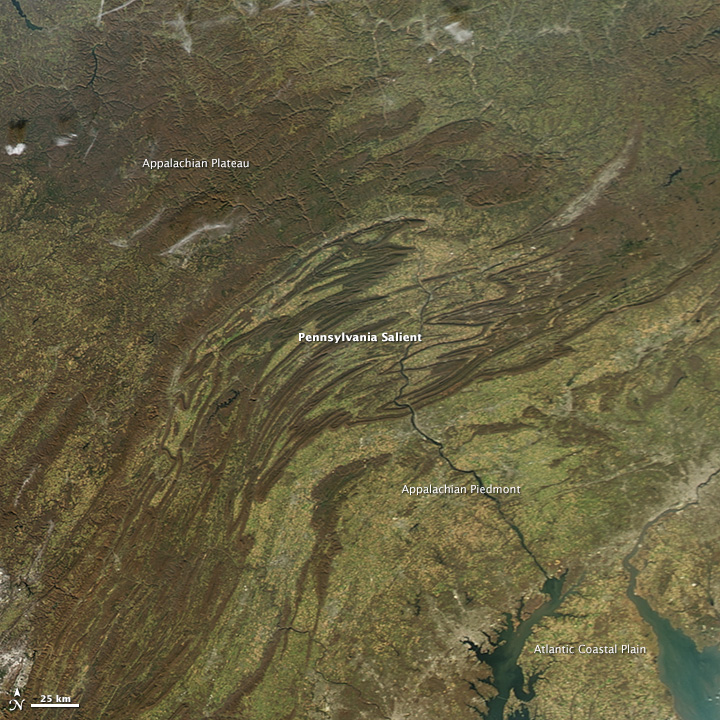The Appalachians in a sandbox: undergraduate research being presented at GSA North-Central meeting in Pittsburgh
Categories Analogue Modelling, Announcements, Plate Tectonics, PresentationsA mountain range like the Appalachians is the result of rock along hundreds of kilometres of plate boundary deforming over millions of years. Curiously, if we want to see these processes in action by scaling them down to the dimensions of a tabletop and the timescales of a couple of hours, then the material of choice is sand. Undergraduate Research Assistant Joe Wislocki has been busy the last few months producing mini-mountain ranges in our sandbox model:

Joe’s experiments have been focussed on modeling the formation Pennsylvania salient – a significant kink in the trend of the Appalachian mountains. A recent study of the structure of the crust in this region has speculated that this bending is the result of interaction with a strong igneous chunk in the lower crust beneath the salient, generated by rift volcanism hundreds of millions of years prior to the continental collision that produced the Appalachians. We’ve been testing whether a strong block placed within our sandbox, and then compressed, can reproduce a salient-like structure.

He will be presenting the results of his research so far this weekend in Pittsburgh, at the Joint 52nd Northeastern Annual Section / 51st North-Central Annual Section Meeting of the GSA. Read the abstract below, and if you’re at the meeting, come and talk to him on Sunday afternoon at the Undergraduate Research Poster session!
Sunday, 19 March 2017: 1:30 PM-5:30 PM
T12. Undergraduate Research Session I (Posters): Paper No. 26-21ANALOGUE MODELLING OF THE FORMATION OF THE PENNSYLVANIA SALIENT: DO THE APPALACHIANS BEND AROUND AN ANCIENT RIFT?
The Pennsylvania salient is an oroclinal bend in the Central Appalachians at around 40ºN, where Appalachian faults and folds are rotated almost 90º clockwise from the roughly north-south orientation observed elsewhere. Geophysical observations indicate that the lower crust beneath the salient has been thickened by a 7–10 km mafic underplate associated with Proterozoic rifting, and it has been suggested that oroclinal bending resulted from the contrast between localised convergence against a strong backstop in this region versus more distributed deformation to the north and south.
We have tested this hypothesis using an analogue sandbox with a wide design featuring a moveable baseplate that is pushed underneath a fixed backstop. This allows along-strike variations in long orogenic belts to be successfully modelled. The scaling ratio is ~1×10-6, such that 1cm ≈ 10 km. A rigid wooden block, placed in the bottom of the model prior to addition of coloured fine sand layers, represented the strong lower crust underplate. A foam wedge attached to the baseplate was used to represent the colliding Gondwanan continental crust. Sequential photographs taken from the sides and top during the deformation of the sand pile were used to record the sequence of deformation, particularly the location of thrusts and back thrusts within the developing orogenic wedge and their position relative to the rigid basement block.Based on our results, the basement block has significant impact on folding and thrusting during orogenic deformation. In the region above the simulated underplate, thrusts in the deforming sand wedge form several centimeters closer to the indenting wedge, leading to bending of the modelled orogen across its edges. As multiple back thrusts develop during continued convergence, they are more closely spaced in the region in front of the simulated underplate, indicating localised convergence at its leading edge. These results support the hypothesis that a localised region of stronger lower crust can generate oroclinal bending during tectonic convergence, and generate structures like the Pennsylvania salient.